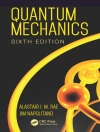NASA’s long-range plans include possible human exploratory missions to the moon and Mars within the next quarter century. Such missions beyond low Earth orbit will expose crews to transient radiation from solar particle events as well as continuous high-energy galactic cosmic rays ranging from energetic protons with low mean linear energy transfer (LET) to nuclei with high atomic numbers, high energies, and high LET. Because the radiation levels in space are high and the missions long, adequate shielding is needed to minimize the deleterious health effects of exposure to radiation.The knowledge base needed to design shielding involves two sets of factors, each with quantitative uncertaintythe radiation spectra and doses present behind different types of shielding, and the effects of the doses on relevant biological systems. It is only prudent to design shielding that will protect the crew of spacecraft exposed to predicted high, but uncertain, levels of radiation and biological effects. Because of the uncertainties regarding the degree and type of radiation protection needed, a requirement for shielding to protect against large deleterious, but uncertain, biological effects may be imposed, which in turn could result in an unacceptable cost to a mission. It therefore is of interest to reduce these uncertainties in biological effects and shielding requirements for reasons of mission feasibility, safety, and cost.
Division on Engineering and Physical Sciences & National Research Council
Radiation Hazards to Crews of Interplanetary Missions [EPUB ebook]
Biological Issues and Research Strategies
Radiation Hazards to Crews of Interplanetary Missions [EPUB ebook]
Biological Issues and Research Strategies
Koop dit e-boek en ontvang er nog 1 GRATIS!
Taal Engels ● Formaat EPUB ● Pagina’s 88 ● ISBN 9780309174909 ● Uitgeverij National Academies Press ● Gepubliceerd 1997 ● Downloadbare 3 keer ● Valuta EUR ● ID 7142632 ● Kopieerbeveiliging Adobe DRM
Vereist een DRM-compatibele e-boeklezer












